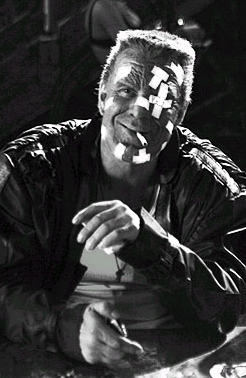How do male-targeted magazines GQ and
MensHealth represent males in order to attract audience?
The representation of men changes drastically
depending on its intended audience and their designed gratifications. Through
selling different aspirations, both magazines aim to make the male more
attractive to women. I will prove this by analysing MensHealth and British GQ
magazine articles and adverts. In addition I will investigate what the
magazines are promoting, whether that be sex, particular models of behaviour or
aspirations. I will apply various theories during my investigation, these
being; uses of gratifications, the mirror stage, how this makes men aspirer to
be like the men they see in advertisements such as the ones in GQ and
MensHealth. Also, I will apply the cultivation theory.
I will be analyzing the October 2013 issue
of GQ, which is the 'Men of the year 2013' special, featuring a very
iconic middle-aged man, Tom Ford. The magazine cover usually features idolised
men aged around 25 and onwards the majority of the time, by doing this it will
give the male audience a mirror effect, creating an aspiration for them. GQ is
published in 18 other countries as well as the UK, averagely circulating around
950,000 magazines within 6 months (1), British GQ had a circulation of 117,778
from January to July 2013 (2). The American-started magazine, launched in
1931 started of as a mens fashion magazine for the clothing trade, aimed
primarily at wholesale buyers and retail sellers. Initially it had a very
limited print run and was aimed solely at industry insiders to enable them to
give advice to their customers. The popularity of the magazine amongst retail
customers, who often took the magazine from the retailers, spurred the creation
of Esquire magazine in 1933.
MensHealth is an American magazine with 40 editions
in 47 countries, launched in 1987. It is also the “best-selling mens magazine
on U.S. newsstands” (3). Although originally started as a men's health
magazine, it currently covers various men's lifestyle topics such as fitness,
nutrition, sexuality and even fashion. The magazine's website, MensHealth.com,
averages 38 million page views a month (4). Its current and former editors
are all males, which explains the 'high-standarded' images of men, trying to attract
the women. Most magazine covers of this magazine include a smiling man, usually
with their top off flaunting a certain part of his body, mostly all, with a
clean-shaved body, usually wearing jeans or joggers. By wearing rugged jeans,
yet having a clean-shaved body, it mixes the metrosexuality and masculinity of
the males.
The common
theme in GQ contains formal, successful, alpha males. This creates an
aspiration for male viewers, giving them an effect of jealousy which then leads
to desire and consumption. One example of this in the magazine can be the
Giorgio Armani ‘ARMANI code’ aftershave advert on page 129. This shows a well
looked after male dressed in a suit with a female dressed in a black cocktail
dress with her face pressed up to the side of his face and her arms around him.
This shows male empowerment and says to the audience if you wear this
aftershave you will be like this. The connotations of this advert show wealth
and power, the woman is leaning over him making it look as if she couldn’t stand
if he wasn’t there. This also links with….
Bibliography;
(1) eCirc for Consumer Magazines. Alliance for Audited Media
(3) Kinetz, Erika (3 September 2006). "Who's the man? Dave. The New Yiork
"Who's the Man? Dave". The New York Times.
(4) "Men's Health". Rodale Inc. Retrieved 2013-06-04.

